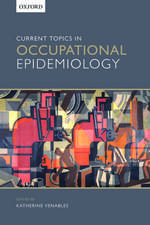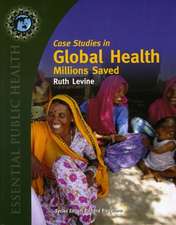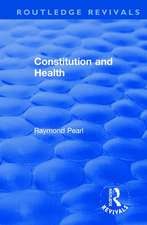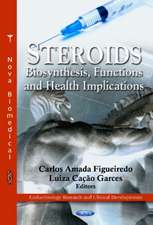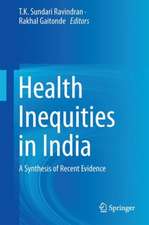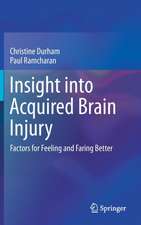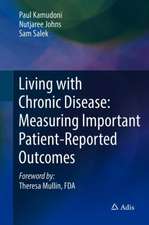Creating Healthy and Sustainable Buildings: An Assessment of Health Risk Factors
Autor Mateja Dovjak, Andreja Kukecen Limba Engleză Paperback – 14 aug 2020
| Toate formatele și edițiile | Preț | Express |
|---|---|---|
| Paperback (1) | 356.30 lei 6-8 săpt. | |
| Springer International Publishing – 14 aug 2020 | 356.30 lei 6-8 săpt. | |
| Hardback (1) | 394.12 lei 6-8 săpt. | |
| Springer International Publishing – 11 iun 2019 | 394.12 lei 6-8 săpt. |
Preț: 356.30 lei
Preț vechi: 375.05 lei
-5% Nou
Puncte Express: 534
Preț estimativ în valută:
68.21€ • 70.15$ • 56.59£
68.21€ • 70.15$ • 56.59£
Carte tipărită la comandă
Livrare economică 20 februarie-06 martie
Preluare comenzi: 021 569.72.76
Specificații
ISBN-13: 9783030194147
ISBN-10: 3030194140
Pagini: 160
Ilustrații: XVIII, 160 p. 15 illus., 10 illus. in color.
Dimensiuni: 155 x 235 mm
Greutate: 0.26 kg
Ediția:1st ed. 2019
Editura: Springer International Publishing
Colecția Springer
Locul publicării:Cham, Switzerland
ISBN-10: 3030194140
Pagini: 160
Ilustrații: XVIII, 160 p. 15 illus., 10 illus. in color.
Dimensiuni: 155 x 235 mm
Greutate: 0.26 kg
Ediția:1st ed. 2019
Editura: Springer International Publishing
Colecția Springer
Locul publicării:Cham, Switzerland
Cuprins
Chapter 1. Introduction.- Chapter 2. Health outcomes related to built environment.- Chapter 3. Identification of health risk factors and their parameters.- Chapter 4. Interactions among health risk factors and decision making process.
Notă biografică
Mateja Dovjak, Ph.D., is lecturer and researcher at University of Ljubljana, Faculty of Civil and Geodetic Engineering, Chair of Buildings and Constructional Complexes and Faculty of Health Sciences, University of Ljubljana. In 2006, she graduated from the Faculty of Health Sciences, University of Ljubljana with a specialisation in environmental health and received the Prešeren award. She completed her Ph.D. in the Environmental Sciences postgraduate study programme, at the University of Nova Gorica, Slovenia. Her research focuses on design of healthy, comfortable and sustainable buildings (thermal comfort, indoor air quality, daylight, acoustics, ergonomics, universal design), and content and emissions of hazardous chemicals in construction products. Mateja has contributed to novel research and development of new areas in connective thinking, e.g., exergy analyses of thermal processes inside the human body together with the processes in a building, morphology design of healing environments, development of integral user-centred cyber-physical systems that create optimal healing-oriented conditions. She has had international collaborations with the Laboratory of Building Environment, Tokyo City University; University of Denmark, Department of Civil Engineering, Section for Indoor Climate and Building Physics; and the Karlsruhe Institute of Technology, Institute of Building Design and Technology.
Andreja Kukec, Ph.D., is lecturer and researcher at the University of Ljubljana, Faculty of Medicine, Centre of Public Health and Faculty of Health Sciences, University of Ljubljana. In 2006 she graduated from the Faculty of Health Sciences, University of Ljubljana, with a specialization in environmental health. In 2013 she finished her Ph.D. under the Environmental Sciences postgraduate study programme at the University of Nova Gorica, Slovenia. Her research and pedagogic work focuses on public health, environmental and social determinants of health, epidemiological methodology (methods and tools), public health measurement, and analytical approaches to health. Andreja’s novel research includes research on various environmental determinants of public health (outdoor air pollution, indoor air pollution, noise); the development of methodologies for assessing the impact of outdoor air pollution (gas pollutant, different size of particulate matter, ultrafine particulate) on health of different population groups (children, elderly); epidemiological methodology (study design on individual and population level, analytical approach); public health measurements (health promotion, engineering and public activities); methods and tools in public health (health impact assessment, health risk assessment in industrial polluted sites, spatial analysis); and preparation of the exposure assessment of different environmental problems (e.g. outdoor and indoor air pollution, noise, and water contamination) in collaboration with interdisciplinary teams (public health experts, engineering experts, and physicians).
Andreja Kukec, Ph.D., is lecturer and researcher at the University of Ljubljana, Faculty of Medicine, Centre of Public Health and Faculty of Health Sciences, University of Ljubljana. In 2006 she graduated from the Faculty of Health Sciences, University of Ljubljana, with a specialization in environmental health. In 2013 she finished her Ph.D. under the Environmental Sciences postgraduate study programme at the University of Nova Gorica, Slovenia. Her research and pedagogic work focuses on public health, environmental and social determinants of health, epidemiological methodology (methods and tools), public health measurement, and analytical approaches to health. Andreja’s novel research includes research on various environmental determinants of public health (outdoor air pollution, indoor air pollution, noise); the development of methodologies for assessing the impact of outdoor air pollution (gas pollutant, different size of particulate matter, ultrafine particulate) on health of different population groups (children, elderly); epidemiological methodology (study design on individual and population level, analytical approach); public health measurements (health promotion, engineering and public activities); methods and tools in public health (health impact assessment, health risk assessment in industrial polluted sites, spatial analysis); and preparation of the exposure assessment of different environmental problems (e.g. outdoor and indoor air pollution, noise, and water contamination) in collaboration with interdisciplinary teams (public health experts, engineering experts, and physicians).
Textul de pe ultima copertă
The open access book discusses human health and wellbeing within the context of built environments. It provides a comprehensive overview of relevant sources of literature and user complaints that clearly demonstrate the consequences of lack of attention to health in current building design and planning. Current designing of energy-efficient buildings is mainly focused on looking at energy problems and not on addressing health. Therefore, even green buildings that place environmental aspects above health issues can be uncomfortable and unhealthy, and can lead to public health problems. The authors identify many health risk factors and their parameters, and the interactions among risk factors and building design elements. They point to the need for public health specialists, engineers and planners to come together and review built environments for human wellbeing and environmental sustainability. The authors therefore present a tool for holistic decision-making processes, leading to short- and long-term benefits for people and their environment.
Caracteristici
One of very few titles that contribute to understanding health risk factors in the context of built environments Provides a holistic approach to the topic, blending public health, engineering, and planning perspectives Introduces a new decision-making tool that can yield both short- and long-term benefits for health and built environments




